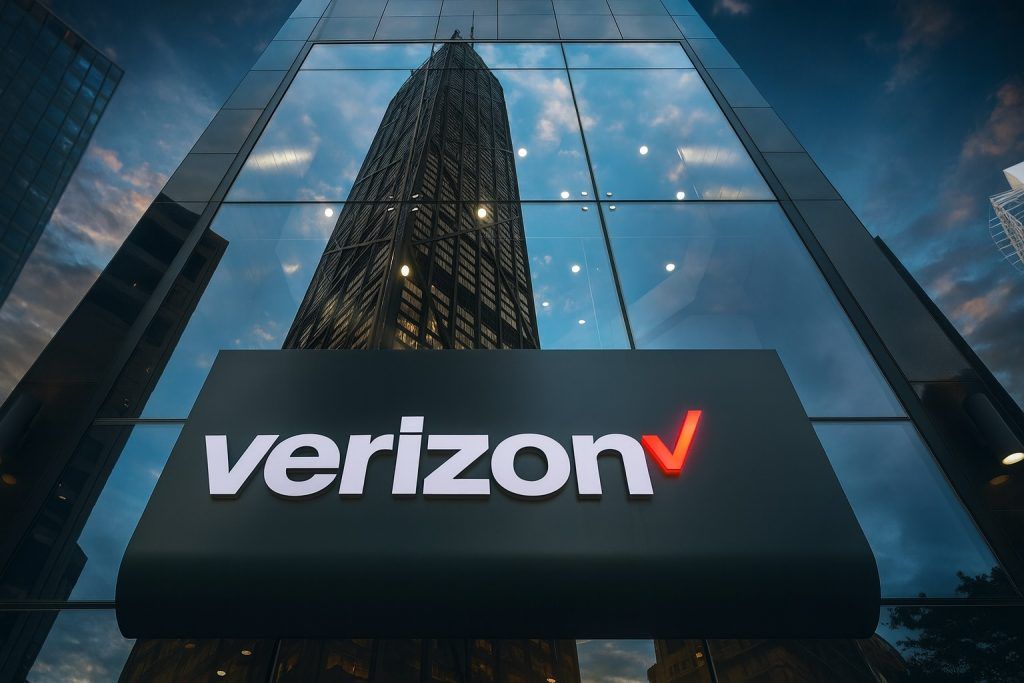Disney shareholders are waking up to a bruised but still hotly debated stock this Friday. After a near‑8% plunge on Thursday following mixed fiscal Q4 results, The Walt Disney Company (NYSE: DIS) is trying to find its footing in premarket trade, with investors weighing strong streaming and park performance against a revenue miss and an escalating distribution fight with YouTube TV. [1]
Key takeaways before the bell
- Stock just had a sharp earnings selloff: Disney closed Thursday at $107.61, down about 7.8% after its Q4 revenue came in slightly below Wall Street expectations even as adjusted earnings beat. [2]
- Premarket trading is relatively calm: Around 8:00 a.m. ET, DIS was changing hands near $107.17 in pre‑market trading, modestly below Thursday’s close (about –0.4%). [3]
- Fundamentals are mixed, not broken: Streaming and Parks/Experiences posted growth and profits, but linear TV and film results dragged overall revenue and segment operating income lower year over year. [4]
- YouTube TV blackout is a real earnings headwind: Disney estimates the ESPN/ABC blackout could last a while, while Morgan Stanley pegs the revenue hit at roughly $30 million per week. [5]
- Big capital return reset: Management doubled its share repurchase target to $7 billion and approved a $1.50 per‑share annual dividend for fiscal 2026, payable in two $0.75 installments next year. [6]
- Wall Street is split between “buy the dip” and “prove it”: BofA, Goldman Sachs and Wolfe Research all see upside, but KeyBanc is staying neutral, highlighting softer performance in key segments and execution risk in 2026 guidance. [7]
1. Disney stock today: price, premarket action and broader market context
Disney stock suffered one of its worst single‑day moves of the year on Thursday, closing at $107.61, down $9.04 or –7.75% after the company reported essentially flat quarterly revenue of $22.46 billion, missing consensus estimates by a narrow margin. [8]
As of early premarket trading on Friday, November 14, 2025, DIS was quoted around $107.17, a fractional decline (about –0.4%) from that close, suggesting no immediate follow‑through panic selling ahead of the opening bell. [9]
For context:
- Disney’s 52‑week range sits around $80.10 to $124.69, putting the current price roughly in the middle of the one‑year band. [10]
- The stock’s slump came on a day when major US indexes also sold off, with the S&P 500 and Dow both dropping around 1.6–1.7% amid repricing of Federal Reserve rate‑cut expectations. [11]
In other words, Thursday’s drop was largely company‑specific, but it landed in a risk‑off tape.
2. What Disney just reported for Q4 FY25
Disney’s fiscal Q4 2025 results are the backdrop for all of today’s trading.
Headline numbers
According to Disney’s official earnings release:
- Q4 revenue:$22.46 billion, essentially flat year over year and slightly below the prior year’s $22.57 billion and analyst expectations around $22.7–$23.0 billion. [12]
- Q4 total segment operating income:$3.48 billion, down 5% from the same quarter last year. [13]
- Q4 diluted EPS:$0.73, nearly tripling from $0.25 a year ago.
- Q4 adjusted (non‑GAAP) EPS:$1.11, slightly below last year’s $1.14 but ahead of most analyst estimates around the low‑$1.00s. [14]
- Full‑year revenue:$94.4 billion, up 3% year over year.
- Full‑year adjusted EPS:$5.93, up 19% from $4.97 in fiscal 2024, reflecting cost cuts, higher park profits and streaming improvements. [15]
That mix—profit growth with flat revenue—is why the market’s reaction has been so stark: investors like the earnings progress but are worried about top‑line stagnation and structural pressure in legacy businesses.
3. Streaming and Entertainment: bright spot with caveats
Disney+ and Hulu keep growing — and making money
Disney’s direct‑to‑consumer streaming business was one of the clearest positives in the report:
- DTC revenue rose 8% in Q4.
- DTC operating income increased to about $352 million, up from $253 million a year earlier. [16]
- Combined Disney+ and Hulu subscriptions reached 196 million, up 12.4 million versus Q3. Disney+ alone climbed to 132 million subscribers, adding 3.8 million in the quarter. [17]
Management highlighted how far the streaming business has come: three years ago, Disney’s direct‑to‑consumer operations were losing about $4 billion annually; now they are consistently profitable and positioned as a “core driver of growth.” [18]
Disney is also pushing deeper integration:
- Internationally, Hulu became the global general entertainment brand inside Disney+, simplifying the app experience. [19]
- Research platform Simply Wall St notes that the integration of Hulu and its recently closed Fubo live‑TV combination effectively creates what it describes as the sixth‑largest pay‑TV platform in North America, central to Disney’s streaming margin ambitions. [20]
Entertainment segment under pressure
The broader Entertainment segment—which bundles streaming, TV networks and film studios—told a more complicated story:
- Entertainment revenue fell about 6% to $10.21 billion in Q4.
- Entertainment segment operating income dropped to roughly $691 million, down significantly from the prior year, largely due to tougher comparisons against 2024’s blockbuster slate and weaker box office for titles like Elio. [21]
- Linear Networks revenue within Entertainment slid 16%, and operating income fell 21%, reflecting ongoing cord‑cutting, lower ad revenue and the loss of Star India’s contribution versus last year. [22]
MarketWatch and Reuters both framed Thursday’s selloff as a reaction to this mix: the streaming turnaround and IP pipeline look promising, but the legacy TV and film economics remain a drag and keep revenue growth muted. [23]
4. Parks, Experiences and Sports: still powering the business
Experiences: parks and cruises deliver record profits
Disney’s Experiences segment—which includes theme parks, resorts, cruise lines and consumer products—was another key offset to weak TV:
- Experiences revenue rose about 6% to $8.77 billion in Q4. [24]
- Experiences operating income climbed 13% to about $1.88 billion, with domestic parks up 9% and international parks and Experiences up 25%. [25]
Disney said Q4 and the full year delivered record operating income for the Experiences segment, and reiterated aggressive expansion plans:
- New cruise ships: The Disney Destiny launches this month, followed by the Disney Adventure in March 2026, the company’s first ship home‑ported in Asia. [26]
- Theme‑park growth: Expansion projects are underway at all existing theme parks, and Disney is planning a new park in Abu Dhabi, part of a multi‑year push to keep Experiences a global growth engine. [27]
Wolfe Research estimates that 25–40% of Experiences operating‑income growth through FY26 could come from the cruise expansion alone, helping de‑risk the company’s near‑term financial targets. [28]
Sports and ESPN: new DTC era, old cable headaches
On the sports side:
- Sports segment revenue (dominated by ESPN) grew about 2% to $3.98 billion.
- Segment operating income slipped roughly 3% to just under $1.0 billion, squeezed by higher rights costs and spending around the launch of ESPN’s direct‑to‑consumer offering. [29]
Q4 marked a big strategic milestone: the debut of ESPN’s standalone DTC service and upgraded app, giving fans direct access to ESPN’s linear networks and digital features without going through a traditional cable bundle. Early adoption metrics have been strong, and Disney says about 80% of ESPN DTC subscribers also take the broader Disney streaming bundle, which is encouraging for cross‑selling. [30]
5. The YouTube TV blackout: why it matters for DIS today
The headline risk hanging over Disney into today’s open is its carriage dispute with YouTube TV:
- Disney channels, including ABC and ESPN, have been dark on YouTube TV since October 30, affecting roughly 10 million subscribers, the fourth‑largest pay‑TV provider in the US. [31]
- On Thursday’s call, CFO Hugh Johnston said the talks “could go for a little while” and stressed that Disney has built a “hedge” into its guidance assuming a potentially extended blackout. [32]
- Disney CEO Bob Iger reiterated that the company’s offer is “equal to or better than” deals it has struck with larger distributors and that management is “working tirelessly” to restore the channels but will not accept a deal that underprices Disney’s content. [33]
Analysts are quantifying the damage:
- Morgan Stanley estimates that a 14‑day blackout costs about $60 million in revenue, or roughly $30 million per week and around $0.02 of EPS per week if the dispute drags on. [34]
- YouTube TV is trying to limit subscriber frustration by offering affected customers a $20 bill credit, which could accelerate churn toward rival services. [35]
Disney is leaning into that potential upside. Johnston told analysts that the “dollar impacts” are partly offset by subscribers who may shift to Hulu + Live TV or ESPN+ to keep access to Disney sports and news content. SFGate notes that Iger remains bullish that an upcoming slate—Zootopia 2, Avatar: Fire and Ash, The Mandalorian, Toy Story 5 and Avengers: Doomsday—can help offset any near‑term hit to Entertainment income. [36]
For today’s trading, the key questions are:
- Does Disney issue any new statement on the dispute before or during market hours?
- Do investors start to view the blackout as a bargaining chip that boosts Disney’s streaming ecosystem, or as a persistent drag that undermines TV economics?
Either way, this story is now embedded in Disney’s risk disclosures and guidance — and it’s one of the first things short‑term traders will be watching. [37]
6. Capital returns: dividend hike and a bigger buyback
Disney is trying to soften the blow of near‑term volatility with a more generous capital‑return plan:
- The board doubled its share‑repurchase target to $7 billion for fiscal 2026, versus actual buybacks in fiscal 2025. [38]
- Disney declared an annual cash dividend of $1.50 per share, to be paid as two $0.75 payments on January 15, 2026 (record date December 15, 2025) and July 22, 2026 (record date June 30, 2026). [39]
The company is also guiding for:
- Double‑digit adjusted EPS growth in both fiscal 2026 and 2027.
- Around $19 billion in cash from operations and $9 billion in capex in FY26.
- Roughly $24 billion of content investment across Entertainment and Sports. [40]
That combination of rising dividends, larger buybacks and still‑healthy capex is one reason many research shops still see upside in the stock despite Thursday’s selloff.
7. What Wall Street is saying this morning
Analyst commentary dated November 14, 2025 is shaping pre‑market sentiment:
- BofA Securities
- Reiterated a Buy rating and $140 price target.
- Acknowledged the stock’s post‑guidance drop but argued the fiscal 2026–2027 outlook and ramping capital returns make the shares attractive at current levels. [41]
- Goldman Sachs
- Reaffirmed its Buy rating and $152 target, calling Disney “attractive” at about 16× its projected fiscal 2026 earnings and emphasizing the streaming and park businesses as key drivers of long‑term value. [42]
- Wolfe Research
- Trimmed its target from $139 to $133 but kept an Outperform rating.
- Calculates Disney at roughly 16× next‑12‑month EPS, a ~10% discount to the equal‑weight S&P 500 and ~30% discount to the broader S&P 500, and notes that cruise‑ship growth could supply up to 40% of Experiences operating‑income growth through 2026. [43]
- KeyBanc Capital Markets
- Maintained a Sector Weight (neutral) rating.
- Called Q4 results “disappointing” in Domestic Experiences and DTC, even though the company reaffirmed double‑digit EPS growth guidance for 2026 and 2027. KeyBanc points out Disney trades at about 17× earnings with a very low PEG ratio (~0.1) and a strong Piotroski Score of 8, suggesting underlying balance‑sheet and cash‑flow strength despite execution risks. [44]
Various data providers peg the average 12‑month price target around $133–$135, implying roughly 20–25% potential upside from the $107 area, though that assumes Disney hits its multi‑year earnings and cash‑flow targets. [45]
Independent research and quant platforms are mixed but generally constructive:
- A TIKR review pegs consensus fair value around $134.22, noting that profit growth has largely been driven by margin improvement and buybacks rather than strong top‑line expansion. [46]
- Simply Wall St estimates a fair value near $133.22, with community narrative forecasts calling for $106.4 billion in revenue and $11.9 billion in earnings by 2028 (about 4% annual revenue growth). [47]
8. Other Disney headlines hitting today’s news feeds
Several other stories dated November 14, 2025 (or late November 13) may influence how investors feel about the brand and its governance:
8.1. DEI language dropped from the annual report
Fox Business reports that Disney’s 2025 Form 10‑K no longer uses the terms “diversity,” “DEI” or “diversity, equity and inclusion,” after featuring a dedicated DEI section in its 2024 SEC filing. The outlet frames this as part of a broader scaling‑back of publicly branded “woke” initiatives over the last year. [48]
For investors, the direct financial impact is unclear, but it may affect how ESG‑focused funds and politically sensitive investors view the stock and its long‑running governance and brand battles.
8.2. Institutional holders trimming positions
MarketBeat notes that M&G PLC cut its Disney position by about 43% in Q2, reducing its stake to roughly 7,415 shares worth around $919,000 at the time of filing. A separate MarketBeat item says Banco Bilbao Vizcaya Argentaria (BBVA) also sold down Disney shares, though DIS remains widely held across global funds. [49]
These are not make‑or‑break moves on their own, but they underscore that some institutional holders have been taking profits or reallocating following the stock’s rebound earlier in 2025 and ahead of this week’s volatility.
8.3. “Overreaction” vs. “deserved reset”
While we couldn’t access every piece directly, multiple commentaries today characterize Thursday’s selloff as either:
- A potential overreaction to short‑term weakness in film and legacy TV that may have “limited consequence” for long‑term growth; or
- A necessary reset after the stock’s strong run, forcing investors to confront slower revenue growth and the risks around Disney’s aggressive 2026–27 targets. [50]
Trefis, for example, argues that Disney’s pullback to the $105–110 range brings the stock closer to technical support, which could be attractive if investors buy the turnaround story—but warns that a deeper break would signal the market is still discounting further downside. [51]
9. What to watch in Disney stock today
If you’re following DIS into the open, here are the key things to monitor (not investment advice):
- Price and volume at the open
- Does Disney stabilize near Thursday’s close around $107–108, or does selling resume on heavy volume?
- Watch how today’s volume compares with the ~44 million shares traded on Thursday’s drop. [52]
- Any updates on YouTube TV
- A fresh statement from Disney, YouTube TV or regulators could quickly move the stock.
- Markets will react differently to hints of a near‑term resolution versus talk of a protracted standoff.
- Options and expiration dynamics
- Today is also an options expiry date for several DIS November 14, 2025 contracts, which can amplify intraday volatility around popular strike prices (like the $105 and $110 levels). [53]
- Street research and rating changes
- More downgrades or target cuts beyond Wolfe’s tweak to $133 could reinforce the bearish narrative.
- Conversely, additional “buy the dip” calls from high‑profile strategists might help firm up support.
- Macro backdrop
- With major indexes under pressure and Fed expectations shifting, Disney is trading against a more cautious risk backdrop. If markets stabilize, investors may refocus on company‑specific fundamentals rather than broad risk aversion. [54]
- Follow‑through on capital‑return story
- Portfolio managers will be parsing whether the $7 billion buyback and higher dividend are enough to compensate for near‑term growth uncertainty, or whether they see this primarily as “financial engineering” masking slower revenue gains. [55]
10. Bottom line before the US market opens
Heading into the November 14, 2025 session, Disney sits at the intersection of strong fundamentals in streaming and parks, meaningful headwinds in linear TV and film, and a very public, very costly distribution fight with YouTube TV.
The stock now trades at roughly 16–17× forward earnings, a discount to the broader market, with:
- A 50% dividend increase,
- A doubled buyback plan, and
- Management promising double‑digit EPS growth in 2026 and 2027. [56]
Whether today’s session brings a relief bounce or more downside will likely depend on two things: confidence in that long‑term guidance and any fresh signals about how—and when—the YouTube TV blackout gets resolved.
As always, if you’re considering trading or investing in DIS, it’s important to weigh these developments against your own risk tolerance, time horizon and broader portfolio, and to seek professional financial advice if you need it.
References
1. thewaltdisneycompany.com, 2. thewaltdisneycompany.com, 3. public.com, 4. www.clickorlando.com, 5. frontofficesports.com, 6. thewaltdisneycompany.com, 7. www.investing.com, 8. thewaltdisneycompany.com, 9. public.com, 10. www.marketwatch.com, 11. www.investopedia.com, 12. thewaltdisneycompany.com, 13. thewaltdisneycompany.com, 14. thewaltdisneycompany.com, 15. thewaltdisneycompany.com, 16. thewaltdisneycompany.com, 17. thewaltdisneycompany.com, 18. thewaltdisneycompany.com, 19. thewaltdisneycompany.com, 20. simplywall.st, 21. www.clickorlando.com, 22. www.clickorlando.com, 23. www.marketwatch.com, 24. m.economictimes.com, 25. www.clickorlando.com, 26. thewaltdisneycompany.com, 27. thewaltdisneycompany.com, 28. uk.investing.com, 29. frontofficesports.com, 30. frontofficesports.com, 31. www.reuters.com, 32. frontofficesports.com, 33. www.sfgate.com, 34. www.foxbusiness.com, 35. www.foxbusiness.com, 36. www.sfgate.com, 37. frontofficesports.com, 38. thewaltdisneycompany.com, 39. thewaltdisneycompany.com, 40. thewaltdisneycompany.com, 41. www.investing.com, 42. www.investing.com, 43. uk.investing.com, 44. m.investing.com, 45. 247wallst.com, 46. 247wallst.com, 47. simplywall.st, 48. www.foxbusiness.com, 49. www.marketbeat.com, 50. www.morningstar.com, 51. www.trefis.com, 52. 247wallst.com, 53. www.marketwatch.com, 54. www.investopedia.com, 55. thewaltdisneycompany.com, 56. thewaltdisneycompany.com







